Evaluating the Cost of the iPhone 8: A Detailed Review

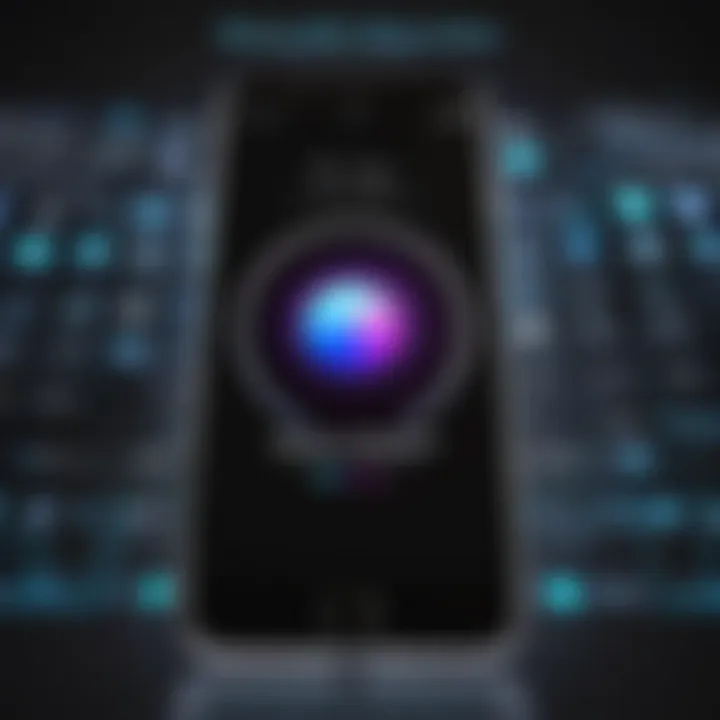
Intro
The iPhone 8, released in 2017, has become a topic of considerable discussion, particularly as it continues to hold a unique spot in Apple's lineup. Many potential buyers are drawn to its relatively lower price compared to the latest models, yet they might wonder whether it represents good value for their money. Evaluating the cost of the iPhone 8 requires examining various factors, from its key features to how it stacks up against newer alternatives. In this analysis, we will unearth the dynamics behind its pricing, potential purchase options, and how it aligns with current market trends.
Key Features
Design and Build Quality
One of the standout points of the iPhone 8 is its elegant design. With a glass back that not only looks stunning but also enables wireless charging, it’s a device that is designed with both aesthetics and function in mind. Users appreciate the robust aluminum frame, which gives a solid feeling in hand. The dimensions—138.4 x 67.3 x 7.3 mm—make it compact enough for one-handed operation, which is a plus for those who prioritize ease of use.
This attention to design extends to the color options too. Available in Silver, Gold, and Space Gray, users can choose a look that resonates with their personal style. Each color complements the glass finish, making the device visually appealing.
Display and Performance
When it comes to the display, the 4.7-inch Retina HD screen enhances the viewing experience. Offering a resolution of 1334 x 750 pixels, it produces sharp images with vibrant colors, slightly compensating for the lower pixel density compared to its pricier siblings. For those who consume media on the go, it performs adequately, even if it doesn't quite match the Super Retina displays found in later models.
The performance of the iPhone 8 is powered by the A11 Bionic chip. This innovative piece of technology offers impressive speed and efficiency, allowing apps to run smoothly and games to perform well without noticeable lag. Moreover, the combination of iOS efficiency with this hardware ensures that even as apps evolve, the iPhone 8 remains competent in handling them.
"The design and performance of the iPhone 8 reflect Apple's commitment to quality, despite being an older model."
Product Specifications
Technical Specifications
- Processor: A11 Bionic chip with 64-bit architecture
- RAM: 2 GB
- Storage Options: 64 GB and 256 GB
- Camera: 12 MP rear camera with Optical Image Stabilization
- Battery Life: Up to 14 hours of talk time
- Operating System: Initially shipped with iOS 11, now upgradable to the latest version
Compatibility and Connectivity
The iPhone 8 supports a vast array of connectivity options. It features Bluetooth 5.0 and Wi-Fi 802.11ac, facilitating smooth and swift connections. Additionally, it’s compatible with a wide range of accessories, including the Apple Watch and various Beats headphones. On the downside, it's still using a Lightning port instead of transitioning to USB-C, which some users may find inconvenient.
Overall, the iPhone 8 holds a unique position in the current technological landscape, providing a blend of classic design and solid performance at a relatively reasonable price. For those considering a new device, it’s crucial to weigh its comprehensive features against personal needs and preferences in the rapidly evolving smartphone market.
Understanding the iPhone
The iPhone 8 marked a significant point in Apple's smartphone history, blending the essence of earlier models with notable advancements. It represents a moment when the company decided to take a step back from its all-screen design trend, giving consumers a taste of nostalgia while pushing the boundaries of technology. This section is critical as it lays the foundation for appreciating not just the pricing of the device, but also its relevance in today's technology landscape. To understand the iPhone 8 fully, one must consider its features, the technological context in which it emerged, and the diverse consumer needs it addresses.
Key Features of the iPhone
The iPhone 8 is equipped with a range of features that speak to both its design philosophy and its utility as a smartphone. Some pivotal features include:
- Glass and Aluminum Design: With an all-glass back and aluminum frame, the iPhone 8 combines aesthetics with durability. It's not just another pretty face; this design allows for wireless charging.
- A11 Bionic Chip: This chip boasts a six-core CPU that's faster than its predecessors, enabling smoother multitasking and efficient battery usage. When applications demand peak performance, the iPhone 8 is right up to the task.
- Camera Capabilities: The 12-megapixel rear camera, coupled with optical image stabilization, provides a user experience that’s rich in detail and quality. With new image signal processing and better low-light performance, it's a delightful upgrade for photography enthusiasts.
- Display: Featuring a 4.7-inch Retina HD display, this phone's screen is crisp and vibrant, enhancing viewing experiences whether for video calls or streaming your favorite shows.
These features make the iPhone 8 not merely a gadget but a thoughtfully constructed device aimed at fulfilling users' varied demands, from casual browsing to serious productivity.
The Evolution of the iPhone Series
Understanding the iPhone 8 requires a glance back at the evolution of the iPhone lineage. Since the original iPhone debuted in 2007, Apple has propelled the series through a cycle of innovation and refinement.
- Seismic Shifts: Each new model seemed to either introduce groundbreaking features or enhance existing ones. From the Touch ID fingerprint recognition to the Face ID facial recognition, every generation brought something novel, keeping the brand at the forefront.
- Incremental Improvements: The shift from iPhone 6 to iPhone 7 saw a bolstering of camera technology and water resistance. With the iPhone 8, Apple opted for a design reminiscent of the earlier models while incorporating significant hardware advancements.
"In a world where technology is evolving rapidly, the history of the iPhone series demonstrates how Apple has consistently adapted to consumer needs while setting industry standards."
This historical perspective not only sheds light on why the iPhone 8 was designed as it was but also helps frame the conversation regarding its pricing and position in a crowded market today. Understanding its past is crucial for appreciating the iPhone 8's value and identifying how it meets the demands of tech-savvy consumers.
Market Price Overview
Understanding the market price of the iPhone 8 is essential for anyone considering a purchase. The price impacts not only the buying decision but also reveals a lot about the device’s standing within the tech landscape. This section breaks down how the current market conditions, supply chains, and competition shape the price of the iPhone 8.
One of the first things to consider is the current landscape of smartphone prices. The iPhone 8, though an older model, has a unique position; it offers a certain lineage and recognition that many consumers still find appealing. Not to forget, it brings several features typical of higher-end models, so assessing its price in light of newer competitor smartphones makes sense.
When diving into the pricing structure, one should keep in mind how factors like brand reputation, consumer loyalty, and historical pricing trends play a role. For example, Apple products tend to maintain their value longer compared to other brands, leading to an interesting dynamic in the resale market as well. The affluent networks around Apple often afford it some see-sawing where prices fluctuate based on demand spikes during product launches and holiday seasons.
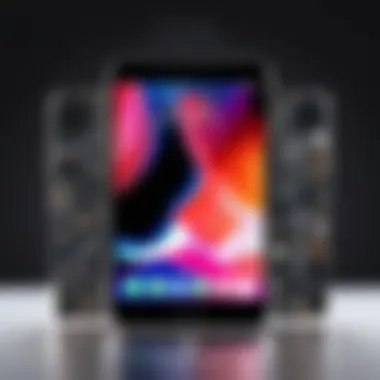
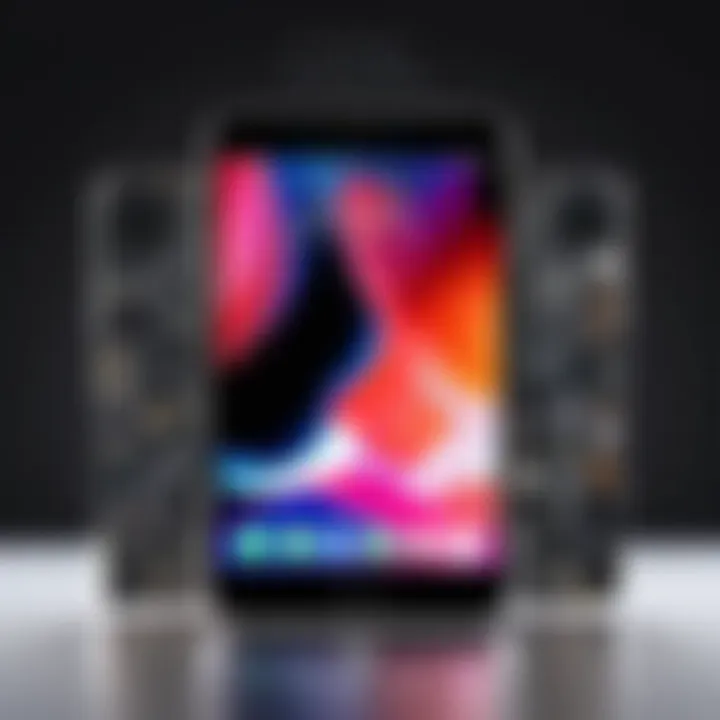
"The perceived quality and reputation of a product greatly influence its price point in the marketplace"
Current Retail Pricing
The retail price for the iPhone 8 differs depending on where you look. In many circumstances, official Apple retailers still hold certain price points, but with time, those prices may become more competitive through discounts or bundles. The more common trend is that the price typically hovers between $300 to $500, depending on condition and storage size. During promotional events like Black Friday, retailers often slash these numbers further, drawing in bargain hunters.
Which brings us to the concept of availability—for a device that’s been on the market since 2017, it’s crucial to see how many are left in stock. Scarcity can often bump up the price considerably, especially if online or in-store inventory goes low, pushing potential buyers to pay a premium for immediate acquisition.
Variations Based on Storage Options
The iPhone 8 comes in three distinct storage capacities: 64GB, 128GB, and 256GB. These options not only cater to different user needs but also significantly affect the overall price. Typically, prices for the 64GB variant start lower, while the 256GB model can command a notably higher price point, possibly expanding up to $200 more depending where you’re purchasing.
Here’s a brief breakdown:
- 64GB: Generally ranges from $300 - $400, depending if it’s new or used.
- 128GB: It might be slightly above that, often from $350 - $450.
- 256GB: Can see a price range of $400 - $500, sometimes exceeding this if bought from specific retailers.
Understanding this difference is vital for consumers who want to balance cost with usability. If you’re someone who takes photos or downloads various apps, choosing a higher capacity could save headaches later on.
Price Comparisons with Competitors
In today’s world, shoppers often play a mental game of comparing prices across brands to extract maximum value. The iPhone 8 is consistently compared to models like the Samsung Galaxy S8 and other contemporaries, which typically hover around the same price bracket.
When you stack up the numbers, keep in mind:
- The Samsung Galaxy S8 might offer some attractive features, yet its resale value often declines faster than that of the iPhone 8.
- Google Pixel 2 also enters the chat, being another solid contender within that price range, boasting impressive camera quality while appealing to budget-conscious buyers.
Still, for tech-savvy individuals, the charm of the iPhone lies in its ecosystem, security updates, and brand loyalty that transcends the mere numerical costs.
Overall, while the iPhone 8 may not be the pinnacle of smartphone technology today, its price point offers a unique balance of value and prestige.
Factors Affecting the iPhone Price
When diving into the pricing of the iPhone 8, it’s vital to understand the factors that influence its market value. These elements not only affect current prices but also shape broader purchasing decisions for consumers. By unraveling the dynamic interplay between demand, availability, seasonality, and vendor reputation, potential buyers can make more informed choices that align with both their budget and expectation.
Increased Demand and Availability
One prominent aspect is the relationship between demand and availability. When a device like the iPhone 8 hits the shelves, high demand propels prices upwards almost immediately, especially during a new release. Consumers often scramble to get their hands on the latest tech, and that urgency can create a premium on the price tag. However, as availability increases—whether through retail stores, online platforms, or second-hand markets—the competitive landscape can start to temper those initial high prices.
- Consumer Behavior: Individuals inclined to rush into purchases during launch phases often pay more, while those who wait might snag a better deal.
- Supply Chain Factors: The sourcing and distribution channels can also impact availability; if units are in short supply, it tends to maintain a higher price.
Market Seasonality Trends
Market seasonality plays a critical role as well. Certain times of the year—like the holidays—can significantly drive pricing. During peak shopping season, you might find the iPhone 8 fetching a premium simply due to increased consumer interest. This phenomenon ties closely to retail strategies, where companies advertise sales and promotions that can influence purchasing behavior.
- Holiday Sales: During times like Black Friday or during the back-to-school season, prices may dip as various vendors seek to attract buyers.
"Understanding the cycles of demand and seasonal trends is essential for anyone looking to evaluate the iPhone 8's price effectively."
Condition and Vendor Reputation
Lastly, the condition of the device and the reputation of the vendor can impact price significantly. New devices come fresh out of the box, complete with warranties and guarantees that can lend reassurance to buyers. Meanwhile, refurbished models or those sold by less reputable vendors may come at lower price points, but they often carry their own risks.
- New vs. Refurbished: A brand-new iPhone 8 will undoubtedly cost more than a refurbished one, but uncertainty surrounding the condition or the previous ownership can be a hidden cost.
- Vendor Trustworthiness: Purchasing from established vendors like Apple or reputable electronics retailers generally assures quality and may justify a higher price.
In summary, recognizing these factors can significantly augment one’s understanding of the iPhone 8 pricing landscape. Whether you're a consumer in the market or a tech enthusiast keeping tabs on trends, these elements are paramount in discerning the real value of this iconic smartphone.
Purchasing Options for Consumers
When it comes to buying the iPhone 8, consumers face a myriad of choices. Understanding these options can be crucial for both budget-conscious buyers and tech aficionados alike. This section delves into several aspects of purchasing the iPhone 8, emphasizing the benefits and drawbacks of each choice.
New Versus Refurbished Models

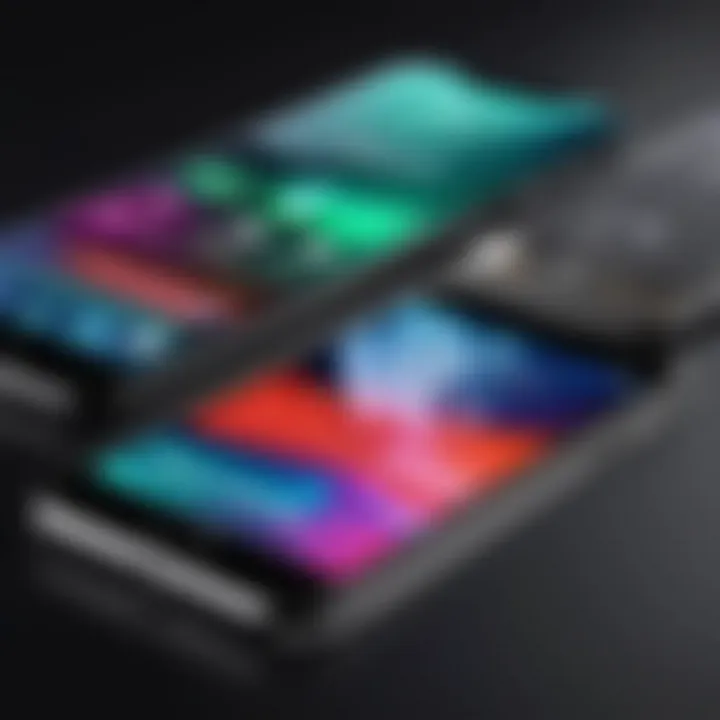
One major decision potential buyers encounter is whether to opt for a new or refurbished iPhone 8. New models, while more expensive, offer the assurance of being in pristine condition and come with a full warranty. On the flip side, opting for a refurbished device can lead to substantial savings. Typically, refurbished phones are tested and certified by the manufacturer or retailers and often come with a limited warranty.
Here are some points to consider when making this choice:
- Cost Savings: A refurbished iPhone 8 can be significantly cheaper than a brand new one, appealing to those who want to stretch their budget.
- Device Condition: Ensure the refurbishment comes from a reputable source, as the quality can vary.
- Warranty Options: Some refurbished models may include warranty coverage, offering peace of mind if issues arise.
Ultimately, consumers should weigh their priorities—whether they value the latest tech or are flexible with potential wear and tear.
Carrier-Specific Pricing Strategies
Another crucial factor in purchasing an iPhone 8 involves the pricing strategies employed by wireless carriers. Different carriers often have their own pricing structures, which can include seasonal deals, upgrading incentives, or promotional discounts. Following are common strategies:
- Contractual Deals: Some carriers might provide the iPhone 8 at a lower upfront cost in exchange for a long-term contract.
- Pay-As-You-Go Plans: Alternatively, prepaid plans can allow consumers to buy the phone outright and avoid long-term commitments, though the initial price might be higher.
- Trade-In Incentives: Many carriers offer attractive trade-in values for older devices, helping to lower the overall cost of the new phone.
These strategies can influence a person’s total cost of ownership, so exploring various options is advisable before making a decision.
Unlocking the iPhone
Unlocking the iPhone 8 can also affect its cost and flexibility for consumers. An unlocked iPhone is free of carrier restrictions, allowing users to switch networks or utilize local SIM cards when traveling. The significance of unlocking is not to be underestimated:
- Increased Resale Value: Unlocked phones generally command better resale prices, as they appeal to a broader audience who wish to use different network providers.
- Flexibility: Switching carriers becomes easier, especially if another provider offers better deals or coverage.
- Travel Compatibility: When abroad, travelers can find local SIM cards to avoid hefty international roaming fees.
In summary, knowing how to approach unlocking brings added versatility to owning the iPhone 8.
Buying the iPhone 8 doesn't just end with a mere price tag; it intricately weaves together aspects like condition, pricing strategies from carriers, and unlocking options. These elements collectively define a buyer's total experience and cost of ownership—something that is more important than ever in today’s market.
"The choice between new, used, or unlocked can ultimately shape your whole experience with the device."
By staying informed on purchasing options, prospective buyers can tailor their choices to align with their preferences and financial plans.
Resale Value Considerations
Understanding the resale value of the iPhone 8 is critical for consumers who wish to maximize their investment in this device. Many factors play into how much one can recover after selling the phone, and ignoring these can lead to significant losses. Knowing resale value considerations helps potential buyers make informed decisions about their purchase, especially if they plan to upgrade in the future. Market dynamics, brand reputation, and device condition can all make a notable difference in the final selling price.
Depreciation Trends
When it comes to depreciation, iPhones usually hold their value better than many other brands. The iPhone 8 specifically, with its strong build and brand legacy, tends to see less steep depreciation compared to alternatives. Typically, smartphones depreciate around 20% to 30% the moment they're taken out of the box. However, after the first year, that rate oftentimes slows down, making them more feasible for resale.
- Initial Purchase Price: Higher upfront costs can lead to lower percentage depreciation over time.
- Brand Loyalty: Apple users tend to stick with the brand, influencing demand for previously owned models.
- New Models Launch: New iPhone releases often spike the selling frenzy of older models, impacting their resale dynamics.
Investors in technology might want to keep an eye on historical trends—like how the iPhone 6’s resale value dropped after new models hit the market. This gives helpful insight into potential future depreciation.
Selling Platforms and Their Impact
Different selling platforms drastically influence resale prices. Whether someone decides to sell on eBay, letgo, or even trade-in through Apple will shape the final outcome. Here are some common platforms and their effects on selling:
- eBay: This platform allows for bidding, often raising final selling prices, but it can be hit or miss depending on demand.
- Craigslist and Facebook Marketplace: Offer quick sales but come with risks and may lead to lower prices due to the lack of buyer protections.
- Trade-In Programs: Apple and other carriers provide trade-in options which are often convenient, but the offers can be substantially below market value.
“It's crucial to weigh these platforms against each other to determine where your iPhone 8 might fetch the best price.”
Ultimately, understanding how depreciation works alongside the best platforms for selling will help consumers retain value. A well-researched strategy could turn an upcoming upgrade into a financially sound decision.
Long-Term Ownership Costs
Owning an iPhone 8 is not just about the initial price tag. Understanding long-term ownership costs is essential for making a well-informed decision, especially for those who value technology deeply. Many factors come into play once the smartphone leaves the store, including insurance, warranty expenses, and maintenance needs.
Insurance and Warranty Expenses
Investing in a quality device like the iPhone 8 often leads users to consider insurance and warranty policies. With the average cost of repairs being quite steep, usually upwards of $300 for a screen replacement, having adequate coverage can save users a considerable amount.
- AppleCare+: This is Apple's own warranty program. For a modest fee, it covers accidental damage, which is a common issue for many users. Although it comes at a cost, the peace of mind it provides can be invaluable. The service typically runs around $199 for the two-year coverage.
- Third-Party Insurance: Options like SquareTrade or Asurion can also offer various protection plans. While these often provide coverage for drops, spills, and other damages, it's crucial to read the fine print. Not all policies cover everything, and out-of-pocket costs can differ significantly depending on the plan you choose.
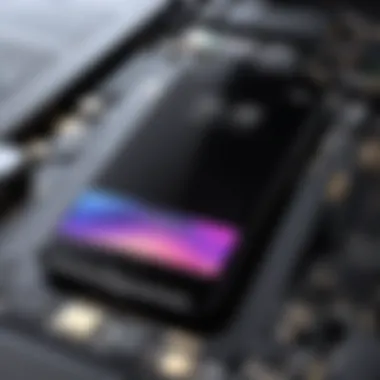
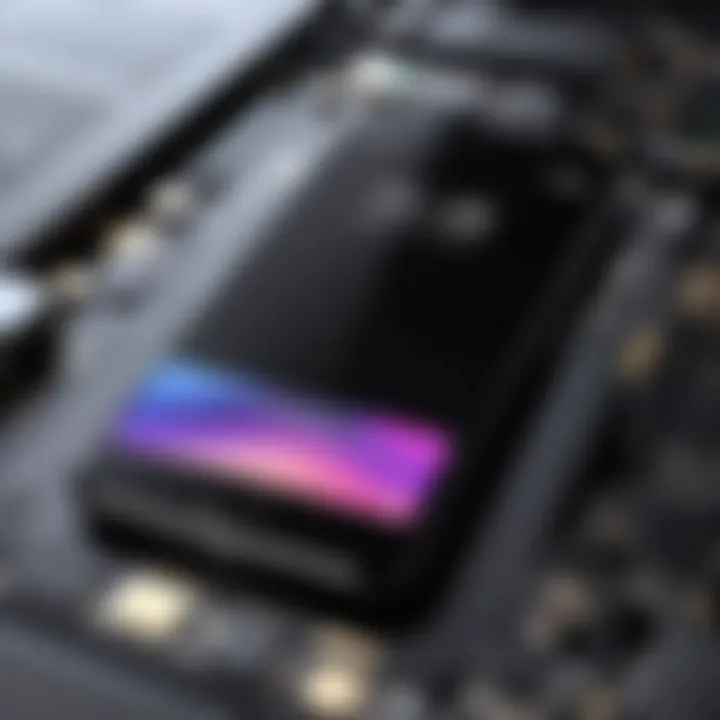
By weighing the pros and cons of these coverage options, users can better manage the risk of spending more on repairs down the line.
Maintenance and Repair Costs
As time goes on, the demand for repairs or maintenance often arises, and iPhones are no exception. Users need to be pragmatic about how these costs can stack up over the life of the phone. Unlike certain models that are more rugged, the sleek design of the iPhone 8 can come with vulnerabilities.
Here are a few common expenses:
- Screen Repairs: If your iPhone 8 suffers from a cracked screen, expect costs near $200 to $300 if not covered by insurance.
- Battery Replacement: iPhone batteries tend to deteriorate after years of use. Replacing a battery at an Apple store can run about $69, which is a more palatable option than buying a new phone.
- Software Updates: Apple regularly releases software updates that may improve your device’s functionality. Sometimes, however, newer software can affect performance, leading to potential slowdowns or reduced usability over time. Although updates are free, they can lead to more demanding hardware requirements, which is vital to consider in the long run.
Additionally, accumulating wear and tear can lead to other repairs, such as fixing the camera or resolving software glitches, which can add up quickly:
"It's not just the upfront investment in the phone that counts; consider the hidden costs down the road that can accumulate faster than you think."
In conclusion, understanding long-term ownership costs allows potential buyers to see beyond just the purchase price of the iPhone 8. It's essential to account for insurance, warranties, and possible repair expenses that may arise later. This understanding gives a fuller picture of the true financial commitment involved in owning such a technological gem.
Comparative Analysis with Other Models
When it comes to purchasing a smartphone, understanding how the iPhone 8 stacks up against its contemporaries is integral for informed decision-making. Comparative analysis allows potential buyers to evaluate not just the price, but also the unique features and benefits that different models bring to the table. In a world flooded with options, knowing what the iPhone 8 offers in comparison to similar devices can significantly sway consumer choices.
iPhone versus iPhone Plus
The iPhone 8 and iPhone 8 Plus may share many similarities, but diving deeper reveals some crucial distinctions. One of the main differences is the screen size; the iPhone 8 hosts a 4.7-inch display, while the iPhone 8 Plus boasts a more generous 5.5 inches. This difference in size impacts not just screen real estate, but also the device's usability for specific tasks like gaming or watching videos.
To shine a light on the camera differences, the iPhone 8 is equipped with a single-lens rear camera, whereas the iPhone 8 Plus features a dual-camera system. The dual system enhances photography capabilities, especially in terms of depth perception and low-light conditions, giving photography enthusiasts a leg up.
Another significant factor is battery life. The increase in size with the iPhone 8 Plus accommodates a larger battery, which tends to translate into longer usage without needing a recharge. Thus, for someone who relies heavily on their device for a full day's work or play, the Plus model might be more appealing despite its higher price point.
Key Factors to Consider:
- Screen Size: iPhone 8 = 4.7 inches, iPhone 8 Plus = 5.5 inches
- Camera Setup: Single vs. Dual
- Battery Life: iPhone 8 Plus generally lasts longer
- Price Differentiation: Higher for Plus model
In essence, while the iPhone 8 might suit casual users just fine, someone wanting a more robust experience may lean towards the iPhone 8 Plus despite it's higher cost.
iPhone versus iPhone
In comparing the iPhone 8 to the iPhone X, the conversation shifts to more advanced technology. The iPhone X introduces a stunning OLED display that offers vibrant colors and deeper blacks. Users might notice a stark contrast when transitioning from the iPhone 8's LCD display. This difference could influence someone’s choice if they value high-quality visuals.
Face recognition is another leap in technology with the iPhone X. Instead of fingerprint recognition, Apple banked on a more futuristic approach—Face ID. Many tech enthusiasts appreciate this innovation, thinking it as a possible area of advancement in security. However, those accustomed to Touch ID might feel hesitant.
When it comes to camera capabilities, while both models boast exceptional quality, the iPhone X enhances portrait photography through its dual-lens system and advanced software features.
Essential Insights:
- Display Technology: OLED vs. LCD
- Security Features: Face ID vs. Touch ID
- Camera Advantages: Enhanced capabilities in iPhone X
- Price Consideration: Typically higher for the iPhone X
Overall, the iPhone X represents a leap toward cutting-edge features, while the iPhone 8 remains a solid choice for those who prioritize value and performance. This comparison grants a clearer lens to understand where the iPhone 8 fits in the modern smartphone landscape, allowing users to weigh the alternatives thoughtfully.
Final Thoughts on Price Justification
Determining the worth of the iPhone 8 goes beyond its sticker price at a store. It's about understanding what this device brings to the table in terms of functionality, experience, and future value. The importance of evaluating the price justification lies in the interplay between personal value and a device's technical capabilities. A deep dive into this analysis helps potential buyers align their needs with what the iPhone 8 offers.
Assessing Personal Value and Usage
When weighing the iPhone 8's price, one must consider their usage patterns and lifestyle needs. Think about how often you use your phone for photography, navigation, or even gaming. If you find yourself scrolling through social media or streaming videos incessantly, the crisp display and powerful processing of the iPhone 8 could be indeed worthwhile.
Several factors come into play:
- Camera Quality: If you capture moments frequently, the iPhone 8’s camera can make a significant difference. Careful shooters will appreciate its color accuracy, sharpness, and ease of use.
- Durability: This model is built with robust materials, making it resistant to accidental drops and spills. That can save you repair costs or loss of data in the long run.
- Ecosystem Integration: Apple products work seamlessly with each other. If you’re already using other devices like Macs or iPads, the iPhone 8 fits into that ecosystem like a glove.
Moreover, consider how much the phone will be a part of your daily life. If your interactions are primarily through calls and texts, perhaps a less expensive option would suffice. However, if your phone is a central hub for both work and leisure, the investment in the iPhone 8 can be justified.
Predictions for Future Pricing Trends
Looking ahead, the market dynamics for the iPhone 8 may shift based on various factors. While it’s hard to predict with pinpoint accuracy, certain trends can be anticipated. Here are a few pointers to chew on:
- Technological Advancements: As newer models come out, the prices of older models usually experience significant drops. This could make the iPhone 8 more accessible for budget-conscious users in the future.
- Market Demand: The demand for specific features within smartphones evolves over time. Should the market sway towards larger screens or advanced camera functionalities, the interest in the iPhone 8 might cool off, thus affecting resale values.
- Apple’s Pricing Strategies: Historically, Apple has been known to maintain a somewhat stable price structure, but factors like the introduction of 5G-enabled devices may alter that. There could be less incentive for Apple to keep prices as is, specifically as they push users toward newer models.
Ultimately, while the iPhone 8 has its place in the market today, the future holds unpredictable changes that could reshape its financial landscape. Knowing when to buy or sell can significantly impact how much you end up spending or saving in the long term.



